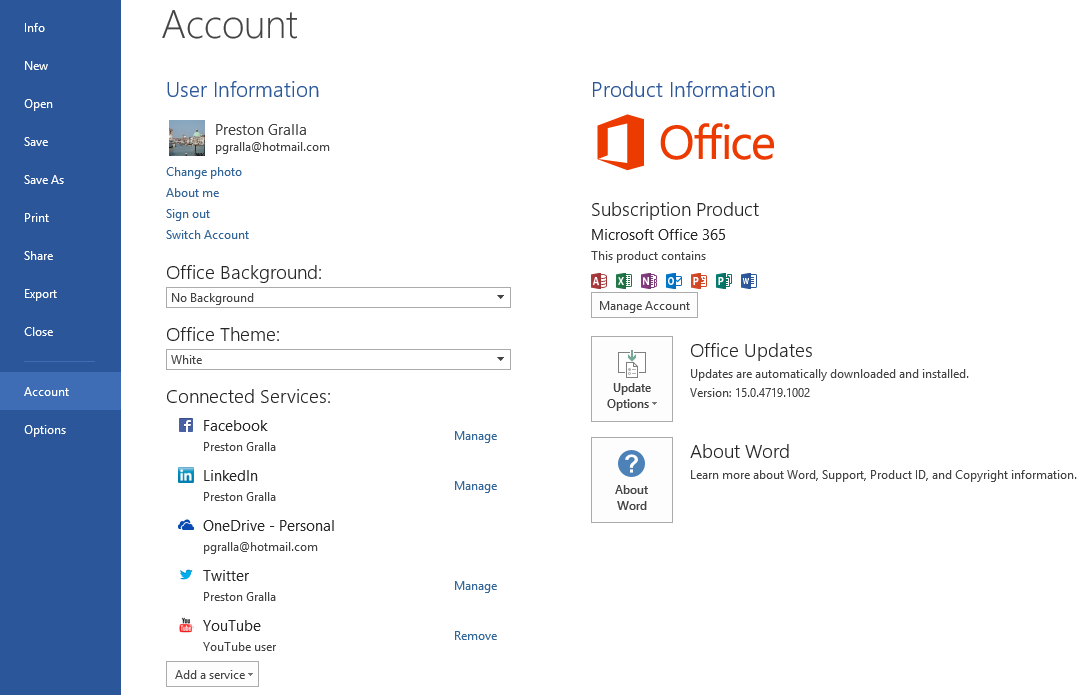

- How do you display codes in word 2013 how to#
- How do you display codes in word 2013 code#
- How do you display codes in word 2013 professional#
These fields can also be updated manually. See How to update fields for more details about manually updating fields. Printing a document or opening a document in Print Layout view will also cause these fields to update.Ī field that is automatically updated each time it is displayed or each time the page is reformatted.

This is the case no matter whether the option File > Options > Display > Printing options group > Update fields before printing is ON or OFF. These fields can be updated by switching to Print Preview because this triggers repagination of the document. The description of Warm above applies but, in addition, these fields can be updated in one more way: Most of these fields are related to pagination and printing of documents. The term “Warm ++” is invented here for descriptive purposes. See How to update fields for more details about manually updating fields. The group of warm fields include both fields that are automatically updated when the source changes and fields that can be manually updated. This also means that a cold field includes nothing to be updated.Ī field that has a result and that can be updated. You can read more about the different layers in a Word document later in this article. You will find my macro for updating fields here: Macro – Update All Fields in Word Document. The easiest way to update all fields in a document with fields spread across several layers is to use a macro. Note that a text box in Word is actually a shape which means that it acts as other shapes in relation to updating fields. This also means that you may need to manually take care of the field update in those areas of a document. This automatic control does not apply to fields in footnotes, endnotes, text boxes and shapes. So be sure to do that first.Fields in footnotes, endnotes, text boxes and shapesĪs is true for headers and footers, footnotes, endnotes, text boxes and shapes you create using the tools in Insert tab > Illustrations group > Shapes reside in their own layers in a Word document, separated from the main body.Īs explained above, fields in headers and footers are updated more automatically than other fields. You might encounter additional issues if you copy XML code, for example, and save it in a different language, such as HTML, without first converting your block of code.
How do you display codes in word 2013 code#
It's best to work with free code editors by pasting the source code first onto the code editor before copying it and then pasting it onto the code style you just created.
:max_bytes(150000):strip_icc()/SelectText-69f5f6df5cac4cfd8707c34735ff0ee5.jpg)
Good old MS Words is not a code writer, so don't rely on it to sort out your code format or syntax. For example, as far as Words is concerned, the apostrophe is practically identical to single quotes. Question: Does your "create a style" technique cure Words compulsion to replace double-quotes and apostrophe with right-and-left double and single quotes?Īnswer: Interestingly, when you copy and paste your codes directly onto Words, some issues may become apparent.
How do you display codes in word 2013 professional#
Content is for informational or entertainment purposes only and does not substitute for personal counsel or professional advice in business, financial, legal, or technical matters. This article is accurate and true to the best of the author’s knowledge. There are many free or partially free code editors, such as Sublime Text 3, Atom, Notepad++, and the Code Writer from Microsoft app store. It's wise to invest on a code editor early on. These styling requirements are beyond the scope of a simple copy and paste technique. Or with line numbers, or in certain types of fonts, and with differing colors. You might need to present your code with a pink background. It's going to be nearly impossible to edit any text at all if your code is pages long. But when you begin editing regular text, your codes will move and become scrambled, getting in the way of your editing. Okay, so you might have successfully copied and pasted a snippet of code in the middle of a page. There has been reports that when you copy directly from a computer program and not a code editor, the semi-colons and the curly brackets end up being in the wrong places. In fact, there’s just no way to tell, unless you’ve been there. Maybe it works for your first one to three lines of codes, but when you have to copy and paste 1,000 lines of codes and retain their formatting, then you might have a problem. Copy and paste does not guarantee you'll keep the code formatting as is! The problem with good ol’ copy + paste


 0 kommentar(er)
0 kommentar(er)
